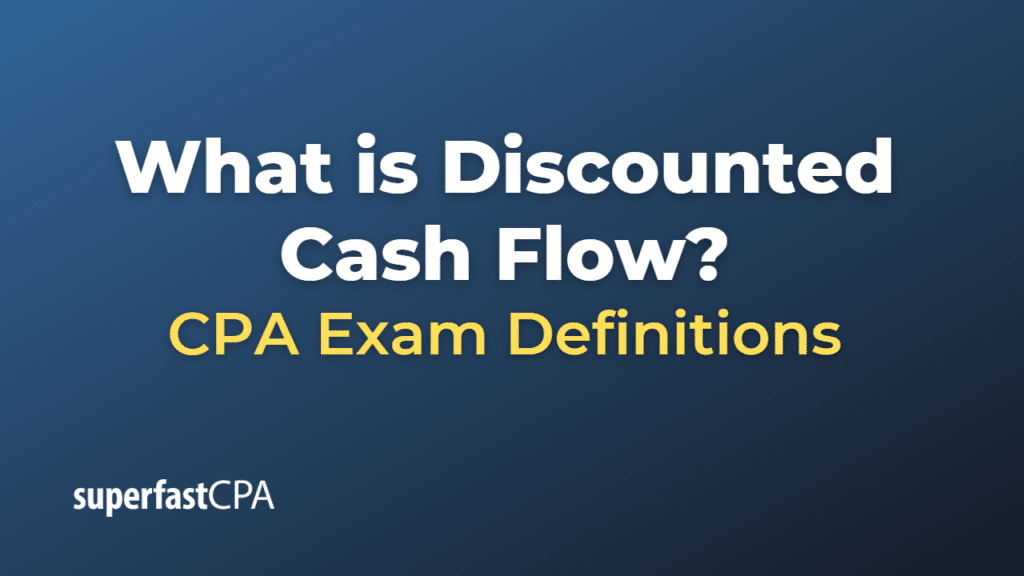Discounted Cash Flow
Discounted Cash Flow (DCF) is a valuation method used to estimate the value of an investment based on its expected future cash flows. It’s a method widely used in finance for valuing a company, project, asset, or a financial instrument.
Here’s a simple explanation of the concept:
- Future Cash Flows: This is an estimation of the money that you expect to receive from the investment in the future. This could be profits, dividends, or even the sale of the investment itself. For a business, this would be future profits. For a bond, it would be coupon payments (interest) and the repayment of the principal.
- Discounting: Money in the future is not as valuable as money today. This is due to several factors, including inflation, risk, and opportunity cost. Discounting is the process of determining the present value of money in the future. This is done using a discount rate, which can be thought of as the interest rate you would need to invest today’s money to end up with the amount of future money.
- Present Value: The present value is the value today of future cash flows. Each future cash flow is discounted back to the present value, and these values are added up. This total present value is the value of the investment according to DCF analysis.
DCF analysis can be complex because it requires making assumptions about future performance and the appropriate discount rate. Different assumptions can lead to vastly different valuations. Nonetheless, it’s a widely accepted method for long-term value investment and financial analysis.
Example of Discounted Cash Flow
Let’s say you’re considering investing in a small business that expects to generate $20,000 in cash flow for each of the next five years. You want to determine what those future cash flows are worth in today’s dollars. For simplicity, let’s assume a discount rate of 10% per year.
The present value (PV) of each year’s cash flow would be calculated as follows:
- Year 1: $20,000 / (1 + 0.10) ^ 1 = $18,181.82
- Year 2: $20,000 / (1 + 0.10) ^ 2 = $16,528.93
- Year 3: $20,000 / (1 + 0.10) ^ 3 = $15,026.30
- Year 4: $20,000 / (1 + 0.10) ^ 4 = $13,660.27
- Year 5: $20,000 / (1 + 0.10) ^ 5 = $12,418.43
By adding these present values together, we get a total PV of $75,815.75.
So, according to this DCF analysis, the value of the small business (or at least the value of its projected cash flows) is approximately $75,816 in today’s dollars.
Please note that DCF analysis can get much more complex than this, especially for large corporations. There are various factors to consider, including changes in cash flow, growth rates, terminal values, varying discount rates over time, and so on. Additionally, it’s important to remember that DCF is based on future predictions, which are inherently uncertain. Despite these complexities, DCF remains a fundamental and widely used tool in finance.













